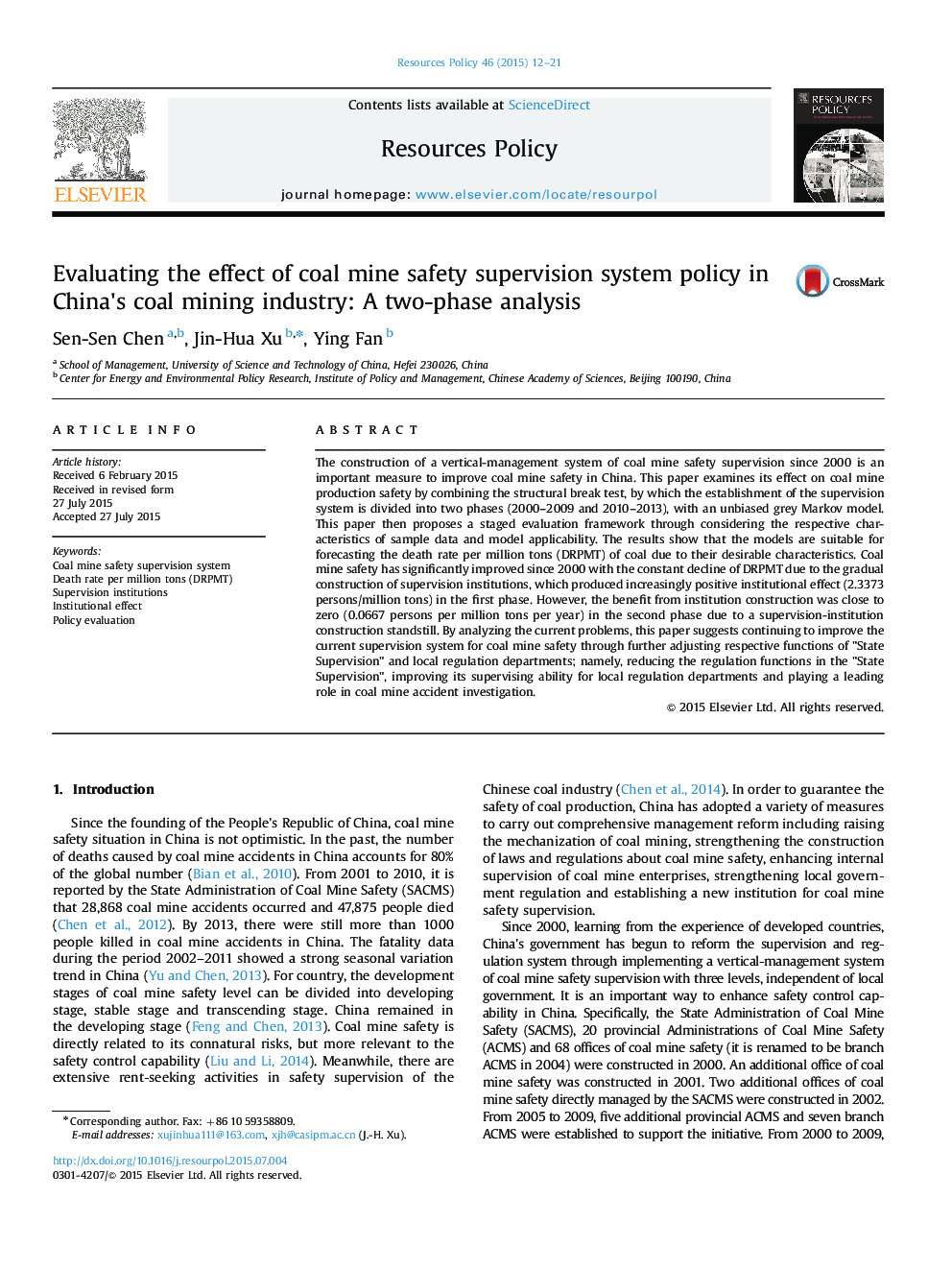| Article ID | Journal | Published Year | Pages | File Type |
|---|---|---|---|---|
| 10483941 | Resources Policy | 2015 | 10 Pages |
Abstract
The construction of a vertical-management system of coal mine safety supervision since 2000 is an important measure to improve coal mine safety in China. This paper examines its effect on coal mine production safety by combining the structural break test, by which the establishment of the supervision system is divided into two phases (2000-2009 and 2010-2013), with an unbiased grey Markov model. This paper then proposes a staged evaluation framework through considering the respective characteristics of sample data and model applicability. The results show that the models are suitable for forecasting the death rate per million tons (DRPMT) of coal due to their desirable characteristics. Coal mine safety has significantly improved since 2000 with the constant decline of DRPMT due to the gradual construction of supervision institutions, which produced increasingly positive institutional effect (2.3373 persons/million tons) in the first phase. However, the benefit from institution construction was close to zero (0.0667 persons per million tons per year) in the second phase due to a supervision-institution construction standstill. By analyzing the current problems, this paper suggests continuing to improve the current supervision system for coal mine safety through further adjusting respective functions of "State Supervision" and local regulation departments; namely, reducing the regulation functions in the "State Supervision", improving its supervising ability for local regulation departments and playing a leading role in coal mine accident investigation.
Keywords
Related Topics
Physical Sciences and Engineering
Earth and Planetary Sciences
Economic Geology
Authors
Sen-Sen Chen, Jin-Hua Xu, Ying Fan,
